 |
|||||
 |
 |
||||
|
Summary information
|
 |
|||||||||||||||||||||||||||||||||||||||||||||||||||||
| • Calculated total magnification w/ 10x eyepiece: – Low objective (#1): 170x = 17x objective – Medium objective (#2): 232x = 23x objective • Resolution –17x objective = 0.9 µm –23x objective = 0.6 µm • Aberration – Chromatic Aberration: Minimal • Greater for eyepieces than the objective lenses • n550 – n660 in the order of 10exp3 for eyepieces and 10exp4 for objectives – Seidel Aberrations: Almost none |
||||||||||||||||||||||||||||||||||||||||||||||||||||||
 |
||||||||||||||||||||||||||||||||||||||||||||||||||||||
|
Ray tracing optical path
|
||||||||||||||||||||||||||||||||||||||||||||||||||||||
|
|
||||||||||||||||||||||||||||||||||||||||||||||||||||||
|
Chromatic aberration
|
||||||||||||||||||||||||||||||||||||||||||||||||||||||
|
Individual lenses have large chromatic aberration, especially the eyepieces (left).
(How they determined this.) |
|||||||||||||||||||||||||||||||||||||||||||||||||||||
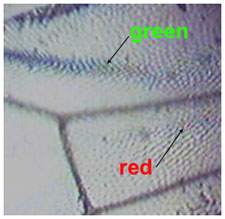 |
||||||||||||||||||||||||||||||||||||||||||||||||||||||
|
E: eyepiece; O: objective
Positive length indicates a shorter focal length |
||||||||||||||||||||||||||||||||||||||||||||||||||||||
|
The combination of all lenses in the optical path results in very low aberration.
|
|||||||||||||||||||||||||||||||||||||||||||||||||||||
|
Color fringes
|
||||||||||||||||||||||||||||||||||||||||||||||||||||||
|
The difference in working distance of objective "2" with different illumination color
|
||||||||||||||||||||||||||||||||||||||||||||||||||||||
|
|
||||||||||||||||||||||||||||||||||||||||||||||||||||||
|
Resolution
Sample objective #1 |
Calculated magnification = 170x (17x objective) Approximated = 164x (16x objective) |
|||||||||||||||||||||||||||||||||||||||||||||||||||||
|
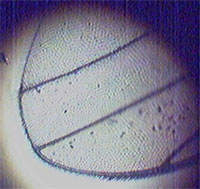 |
|||||||||||||||||||||||||||||||||||||||||||||||||||||
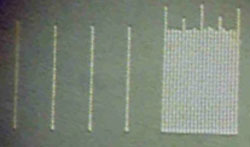 |
||||||||||||||||||||||||||||||||||||||||||||||||||||||
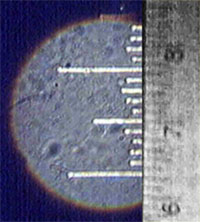 |
||||||||||||||||||||||||||||||||||||||||||||||||||||||
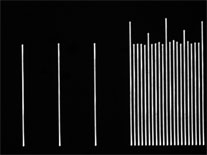 |
||||||||||||||||||||||||||||||||||||||||||||||||||||||
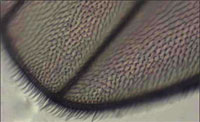 |
||||||||||||||||||||||||||||||||||||||||||||||||||||||
|
Comparison between the 1905 Leitz (top) and modern (bottom) compound microscope. Both near 200x magnification. Note how the modern microscope resolves the hairs.
Left: Fly wing; Right: micrometer scale (10µm). |
||||||||||||||||||||||||||||||||||||||||||||||||||||||
|
Approximating magnification
|
||||||||||||||||||||||||||||||||||||||||||||||||||||||